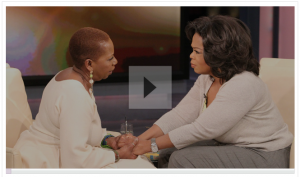Three ways personal development may be making you bad at marketing 1
In this week’s guest post Judy Rees shares her expertise and thoughts about what may be a reason you are struggling for clients.
Three ways personal development may be making you bad at marketing
By Judy Rees
I’m fed up with meeting “struggling coaches”! Every workshop, networking event or conference I go to (and I go to a lot), I seem to bump into dozens of coaches and therapists who are struggling to find paying clients.
I’d understand it if these guys weren’t so skilled. But the “strugglers” included people with fantastic skills as catalysts of transformation; people I’d even trust to coach me! And while they were unhappy and stuck, the people they might have helped were staying unhappy and stuck, too.
I got so fed up that I decided to do something about it, using Clean Language coaching blended with a little internet-marketing fairy dust.
I offered dozens of free “sweet spot sessions” to struggling coaches, helping them to find places where their unique skills, knowledge, experience and passion coincided with the needs of a hungry crowd, waving wads of fivers and keen to work with them.
We proved the crowds were there – one woman found that more than 13m people per month were searching for exactly the kind of service she could provide. And nobody else was serving those people. They were searching for help, and getting none.
And in the process, I realised that as coaches, we get in our own way. There are some lessons we’ve picked up in our personal development that are tripping almost everybody up.
Here are three ways personal development may be making you bad at marketing:
3. Deleting the word ‘why’. Particularly on NLP courses, we’re discouraged from asking ‘why?’ There are perfectly valid reasons for this – but over time, not asking why can become a habit. And that means you’ve accidentally deleted one of the most compelling ways of convincing someone to work with you.
Make sure you know why you offer great value; why people chose to work with you and not somebody else, why you structure your programmes as you do. And remember, once you get a potential client talking about their challenges, it’s legitimate to ask why their challenge is a problem for them. Then you can step in as the solution!
2. Presenting yourself as limitless. Most coaching skills are very generic: you probably can help pretty much anyone achieve pretty much anything. But people’s problems are very special – and when you have a special problem, you seek out a specialist solution. If you had a serious illness, who would you prefer to ask for help?
“I can do anything for anybody” marketing also makes people suspicious of your claims, and makes it difficult to present supporting evidence.
I’m violently opposed to the idea of “finding your niche” as a coach. I haven’t come all this way just to be pigeonholed! However, I do favour starting the journey with a single step, and focussing on one specific kind of problem (perhaps one where you have some success stories to tell) is a great way to begin.
1. Staying positive. I love ‘solution focussed’ coaching. I love being able to work with clients to figure out what’s gone right; what’s working; and what they would like to have happen.
And that can be a problem, particularly when I’m talking to a potential client. Because its people who have problems who buy solutions. It’s people who are experiencing pain who spend money to change things.
If you’re busy spreading sweetness and light, while everyone around seems ‘negative’ and obsessed with problems, you’re failing to pace your potential clients’ experience. You may be making yourself forget your troubles. But by sabotaging your own marketing efforts, you’ll also be prolonging them.
About the Author/Further Resources
Judy Rees is an author, mentor and information marketer, and an expert in Clean Language and metaphor. Her blog is at www.xraylistening.com
If you’d like to find out more about the sweet spot sessions and perhaps book a session of your own, go to www.tranceformingcommunications.com

